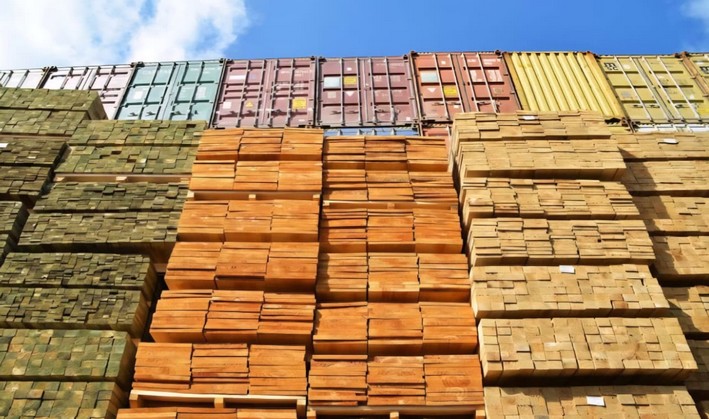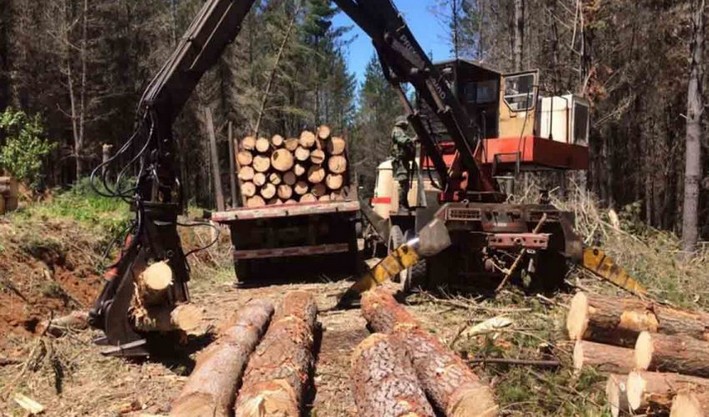Guilds on Alert Over U.S. Wood Tariff: Would Generate Nearly US$110 Million in Additional Costs
The 10% tariff that Donald Trump's administration will impose on wood imports starting October 14 has raised new concerns among small and medium-sized timber enterprises in the Biobío region, which are already facing internal issues. Over the past five years, 169 sawmills have closed in the Biobío and Ñuble regions, resulting in the loss of 3,500 direct jobs and 10,000 indirect jobs, according to figures from the Chilean Wood Corporation (Corma).
The U.S. measure, which could increase to a 30% duty by January 2026, will affect 97.9% of Chile's wood exports to that country, equivalent to US$1.063 billion annually. The additional cost, as explained, will range between US$100 and US$110 million.
René Muñoz, manager of the Association of Forestry Contractors A.G. (Acoforag), explains the mechanism: "Companies will have to pass on that 10% to the price or discount it downward, and that's where we come in, the SMEs providing services. We are the first link in this production chain."
The United States is the second largest destination for Chilean forestry exports, accounting for 18.4% of the total, surpassed only by China (40.5%). Therefore, Acoforag expressed concern, as 50 contractor companies have already disappeared due to the crisis previously affecting the sector.
He highlighted the urgency of reforestation: "There are 300,000 hectares lost to fires that are waiting. A small owner with 10 or 20 hectares is no longer planting because they have no outlook."
In this regard, the association proposes reinstating the afforestation subsidy for small and medium-sized owners, which, according to their estimates, used to allow for planting 30,000 to 40,000 hectares annually.
"We have 4 million hectares of renewable native forests suitable for management. There are 90,000 owners waiting," Muñoz suggests as an alternative. "The world needs fiber. Much of what people use can be made from wood: construction, clothing, packaging, and others," he emphasizes.
"This is turning into almost a perfect storm for the sector," says Rodrigo O'Ryan, president of Corma, for his part. "We already had a very tough scenario before these tariffs: lack of wood due to fires, low global demand, issues with land seizures and terrorism. Now this additional cost could lead to more sawmill bankruptcies, especially among SMEs that lack the backing to overcome these international challenges."
The United States justifies the measure under Section 232 of the Trade Expansion Act, which allows imposing tariffs in the name of national security by defining wood as a critical input for construction.
DIPLOMATIC EFFORTS
Since the announcement, the Chilean Government has maintained ongoing dialogue with the Office of the United States Trade Representative and the Department of Commerce. The Undersecretariat of International Economic Relations (Subrei) aims to replicate the success achieved with copper cathodes, which were exempted from tariffs under the same Section 232 in late July. "Chile has historically proven to be a reliable trade partner. The doors are not closed," states Rodrigo O'Ryan on the matter. He argues that Chilean shipments represent a small volume for the United States and complement its domestic production.
IMPACT ON THE PRODUCTION CHAIN
Michel Esquerré, president of Pymemad, warns of potential indirect effects: "Brazil would face a 50% tariff, so it is expected to start looking for markets in Asia, where we are already present, which could drive prices down. There is an osmosis in the markets as a result of these tariffs."
To mitigate the impact, Esquerré proposes internal measures: "What the State can do urgently is boost construction." According to the president of Pymemad, "if 20 or 30% of social housing is built with wood, we would have a strong boost for SMEs. It is beneficial for the decarbonization plan."
Pymemad also requests modernizing the SME classification system: "A supermarket in Los Ángeles that sells more than 100,000 UF per year is categorized as if it were Walmart. It's a structural error," notes Esquerré.
Source:La Tribuna









